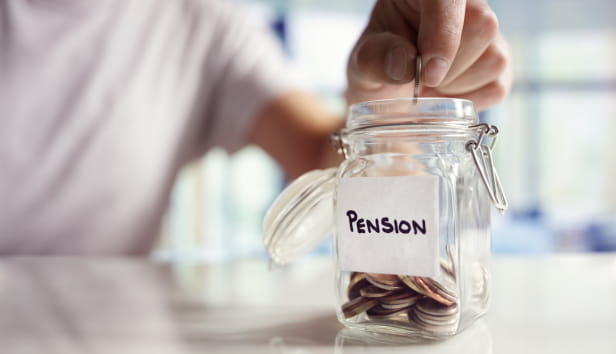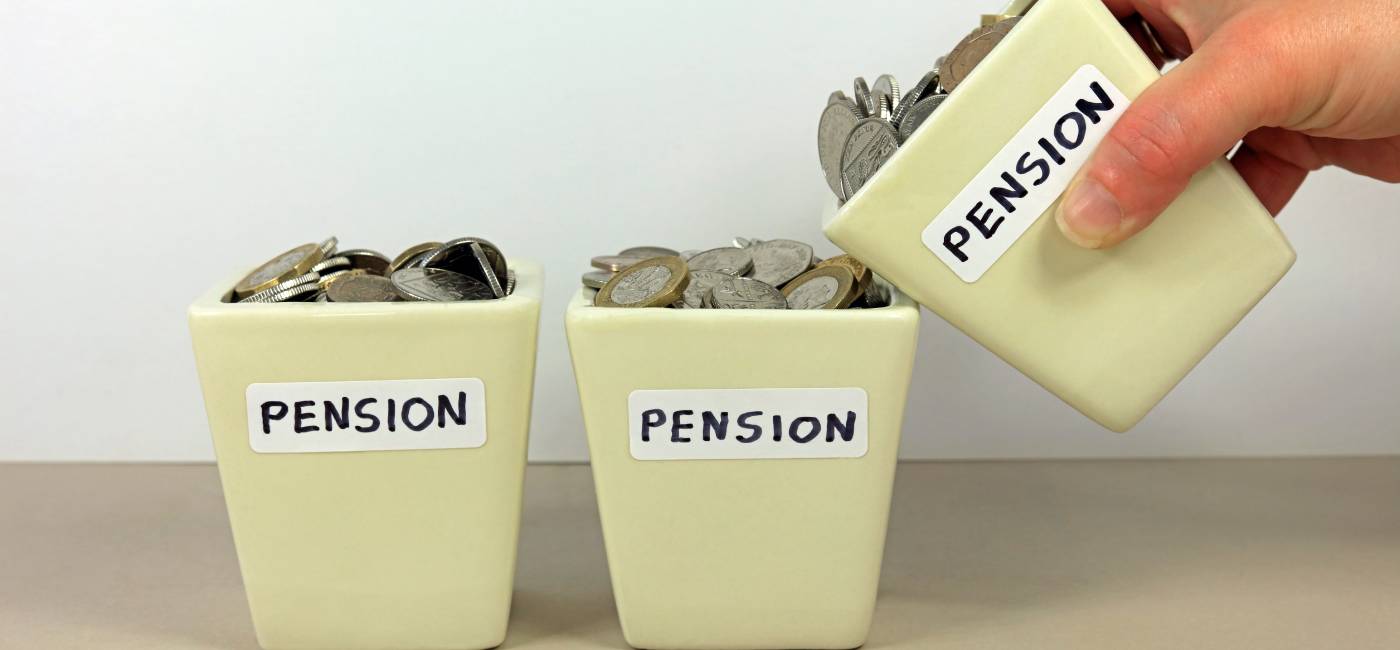

This article is for general guidance only and is not financial or professional advice. Any links are for your own information, and do not constitute any form of recommendation by Saga. You should not solely rely on this information to make any decisions, and consider seeking independent professional advice. All figures and information in this article are correct at the time of publishing, but laws, entitlements, tax treatments and allowances may change in the future.
Tax relief on pensions is a huge pension perk, which can make a huge difference to the size of your pot and help with your tax planning too. But almost half of savers in defined contribution pensions (46%) are not even aware they get it.
This valuable perk has been rumoured to be a potential victim of the next Budget. Below, we explain how it currently works, what could change and what you need to do – before it’s too late.
To encourage us to save for retirement, we don’t need to pay tax on money we pay into our pensions. This exemption from tax is called ‘tax relief’ and it is, in effect, a free top-up from the government that’s equivalent to the rate of income tax that you pay.
It might help to think of it as rebate of the tax you have already paid on that money. So, in England, Wales and Northern Ireland, that’s 20% for basic-rate taxpayers, 40% if you pay the higher rate or 45% if you’re in the additional-rate territory (we cover the Scottish system later on).
Alistair McQueen, head of savings and retirement at Aviva, explains: “If, for example, you pay income tax at a rate of 20% and you invest £100 into a pension, your £100 investment will be boosted by an additional £25 – because 20% (tax relief) of £125 is £25.”
Or, to put it another way, tax relief means it only costs a basic-rate taxpayer £80 to invest £100 into their pension.
Higher rate taxpayers pay £60 to invest the same amount, while additional-rate taxpayers pay just £55. With pension tax relief, the more you pay into your pension, the more help you’ll get from the government to save for your retirement.
Paying into your pension can have other benefits too. For example, if you use pension contributions to move yourself into a lower tax bracket, that can mean you pay less tax overall and get better rates for some other taxes and allowances as well.
It’s been rumoured that tax relief could change at the upcoming November 2025 budget.
One possibility is that tax relief could be limited to basic-rate tax at 20%, or possibly to another flat rate such as 30%. That would raise significant revenue for the government. It would mean a valuable perk of pension saving would be reduced for higher and additional-rate taxpayers.
Sarah Coles, head of personal finance at Hargreaves Lansdown, says: “The current pension tax relief system provides a great incentive to save into a pension.
“If the government opts for a flat rate of pension tax relief – say of 30% – then people paying higher or additional rate tax would be badly hit. It means a pension contribution of £1,000 would cost £700 rather than £600 or £550 as it currently does. However, it would be better news for those who pay basic rate tax as the same contribution would currently cost them £800.”
Another option is that salary sacrifice arrangements could be limited. Currently, salary sacrifice schemes allow employees to give up some of their salary in exchange for higher contributions into their work pension. This allows employee and employer to save on national insurance contributions, as well as the income tax benefits. The previous government commissioned research into whether this should be restricted.
This way of gaining tax relief could be cut completely, or the national insurance benefits could be removed. Or limits might be introduced into how much individuals can sacrifice, in order to target higher earners.
It’s possible that nothing will change in pension tax relief, or that it won’t change straight away. Sarah Coles suggests that if you are worried and can afford it, you pay into your pension now.
“If you pay a higher rate of tax and are worried about changes to the tax relief regime then it is a good idea to make the most of the system as it currently stands by making a contribution to your pension in the coming weeks. This means you can benefit from the higher rates of relief on offer to boost your pension.”
Under the current system, you’ll be getting the benefit of tax relief every month you make a payment into your pension. But as retirement draws closer, tax relief might also encourage you to pay lump sums into your pension too, for example if you get an inheritance.
Those aged between 55 and 64 years are not only the demographic most likely to receive an inheritance, they also receive the largest inheritances on average too, according to the Office for National Statistics.
If you get bonuses at work, you might want to consider paying them into your pension too. Tax relief means you’ll get the full benefit of your bonus, without HMRC taking a significant slice. It’s even better if your employer offers ‘bonus exchange’, where your bonus is paid directly into your pension. This is essentially a type of salary sacrifice, and it means you can then benefit from national insurance savings too.
However, if you do decide to pay lump sums into your pension, it’s important to be aware of the rules.
The maximum you can pay into a pension is 100% of your earnings, up to £60,000. Most people will never be able to contribute 100% of their earnings into a pension, but if you’ve received a sizeable inheritance or bonus, this could affect you.
Clare Moffat, pension expert at Royal London, explains: “So, if you earn £30,000 then you could theoretically pay in a total of £30,000 (including tax relief which is known as the gross contribution) into your pensions.
“That would mean that you could pay £24,000 of an inheritance into your pension and it would be topped up to £30,000 with tax relief.”
If you end up paying more than the annual allowance into your pension, you’ll need to pay a tax charge on that money.
The good news is that you can also use the previous three tax years. If you haven’t used up all your annual allowance in those years, you can use it in the current tax year, which may allow that large pension payment to be made. This is known as the ‘carry forward rule’.
Another option is to split an inheritance between your pensions, if you are in a trusting relationship. Moffat says: “If you are married or in a civil partnership it might be a good idea to split any inheritance between pension pots.”
But if your husband or wife isn’t earning, then the maximum that can be paid into their pension is £2,880, which with basic rate tax relief added, becomes £3,600.
There used to be a lifetime allowance, which was a limit on the amount of benefits that could be built up in a pension scheme without incurring a charge. This was abolished in 2023/24; instead there is a maximum tax-free lump sum that you can take.
/senior-stylish-woman-taking-notes-in-notebook-while-using-laptop-at-home.jpg?sc=max&mw=800&h=450&la=en&h=750&w=1440&hash=5F64B02A8E6C4AD049FC379DF5C66643)
For higher and additional-rate taxpayers, it’s important to check you’re getting the level of tax relief you’re entitled to. There are two main ways of getting pension tax relief. Some pensions apply a method called ‘net pay’.
Here your employer makes your pension contribution before income tax is deducted, so you get the full rate of tax relief automatically, as McQueen explains. “This approach is used by many workplace pensions. In simple terms, net pay means that your pension provider will do all the tax relief work for you.”
Other pensions use a method called ‘relief at source’. In these cases your contribution is made from your taxed income and your provider claims the tax relief back on your behalf.
Pensions you arrange yourself – like stakeholder pensions or self-invested personal pensions (SIPPs) – will always be relief at source. In these cases you may need to claim the extra higher-rate tax relief.
For workplace schemes it will vary – some are net pay and others are relief at source. The quickest and easiest way to understand how tax relief could work for you is to check with your HR department.
If you do need to claim any additional tax relief, the process should be reasonably straightforward. If you usually complete a tax return, you’ll have to claim through self-assessment. There’s a section in the form called ‘tax reliefs’ where you’ll be asked to declare your gross pension contributions (you may be asked to provide evidence).
If you don’t complete a tax return, you can use HMRC’s new online tool. From 1 September 2025, phone calls will no longer be accepted.
This outstanding relief won’t automatically be paid into your pension. You can either get it paid as a tax rebate, get a reduction in your upcoming tax bill or request a change to your tax code, reducing the tax you pay going forward.
Moffat said: “Don’t forget to claim back your tax relief where it’s due. You can claim for the last four years after the end of the tax year. More and more people are falling into higher rate tax brackets because of the frozen tax thresholds, so it might not have affected you before, but it could now.”
There are different tax rates of income tax in Scotland, so pension tax relief is applied differently. Lower earners in Scotland pay less tax than in England, while higher earners pay more.
But more tax equals more tax relief so, if you pay 48% income tax on your salary for example, then you’ll get 48% tax relief.
But if you pay 19% tax, you’ll still get 20% tax relief. If you pay income tax above 20% in Scotland and pay into a private pension, you should claim additional tax relief for these contributions via your self-assessment tax return, as follows:
The government limits how much we can each save in a pension every year to ensure it can afford to provide the associated tax benefits. As explained, the current limit is £60,000 per tax year, or the equivalent of 100% of your annual salary if you earn less than £60,000. Once you have made a taxable withdrawal from your pot, your allowance will reduce to a maximum of £10,000 a year.
This is the money purchase annual allowance and it was introduced as part of the ‘pension freedoms’ a decade ago, when pension savers were given the ability to take as much or as little as they want out of their pensions from age 55, instead of buying an annuity.
Moffat explains: “To prevent people from repeatedly taking money out, benefiting from tax free cash, and putting money back in again with the benefit of tax relief, HMRC introduced a limit on the amount people could invest back in to pensions once they had started drawing taxable cash.”
The MPAA is calculated by adding up your pension contribution, tax relief – the top-up from the government – and any employer contribution.
Very high earners whose income is more than £200,000 (after their pension contributions) might be affected by the tapered annual allowance. This limits the amount of pension savings you can get tax relief on.
You can carry on paying into a pension and getting tax relief until the age of 75, but tax relief on your contributions stops at that point.


Enjoy the freedom to withdraw your savings at any time.

We separate fact from fiction and outline the sensible steps you can take now.

Current rates, when you can claim, eligibility, and how to check & boost your entitlement.

Discover how to assess how much you can safely afford to spend or give away.

Learn how to manage your pension pot to ensure you don’t run out of cash.

Learn how much pension you need & get tips to boost your savings if you're short.

Learn how to combine pensions and whether it's worth it.